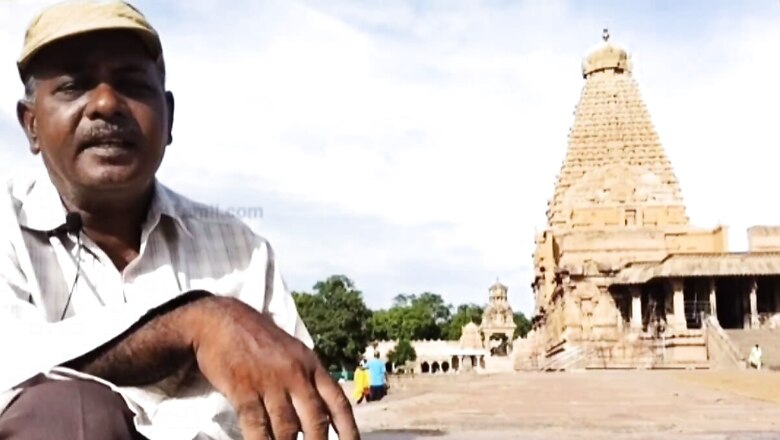
views
Tamil Nadu houses a host of temples. One such among them is Brihadishvara Temple aka Rajarajesvaram (Lord of Rajaraja). It is locally called Thanjai Periya Kovil, which translates to Thanjavur Big Temple. Thus, it is popularly known as the Big Temple. A retired teacher from Thanjavur, named Selvam, acts as a guide for tourists visiting the city and the Big Temple. His speciality is to explain its history and importance to the visitors. Do you know why the Big Temple is so famous? Let’s take a look at the history of the temple, as explained by Selvam.
The Big Temple is a Shaivite temple, which worships Lord Shiva. This famous Hindu temple was built in a Chola architectural style. It is located near the banks of Cauvery. The temple serves as an excellent example of Tamil architecture. It was built by the Chola Emperor Rajaraja 1, between 1003 and 1010 CE. This historical place is recognised by UNESCO as a World Heritage Site.
Rajaraja Chola had dispatched several messengers to many places. One of his messengers named Baskar Ravi Varman was imprisoned. As soon as Rajaraja Chola was informed of this, his son Rajendra Chola went to Kerala to meet him. But his army had to cross paths with the Pandya King, Amarabhujanga. Rajendra Chola won the battle and claimed the Pandya King’s territory. His victorious win was a great success. To honour this victory, the first gopuram at the entrance of Thanjavur Big Temple was named Keralanthahan Vaayil.
The Thanjavur Big Temple’s vimana tower above the shrine is one of the tallest in South India and is built using granite. The temple is renowned for housing one of the largest Shiva lingas in India. It is also recognised for its superior quality of sculpture and for having the brass Nataraja, which is a form of Shiva as the lord of dance. The complex also includes shrines for many gods and goddesses like Nandi, Parvati, Murugan, Vinayagar, Dakshinamurti, Chandikeshwar, Varahi, Thiyagarajar of Thiruvarur, Siddhar Karuvoorar and others. This temple attracts a lot of crowds, both local and international.
The temple has multiple inscriptions in Tamil and Grantha scripts, which are written in Sanskrit and Tamil. It provides a historical introduction of the king who authorised it, the number of gifts to the temple, and residents of the city as well. There are 64 inscriptions of Rajaraja Chola I and 29 of Rajendra Chola I.



















Comments
0 comment